 By Pepper Parr By Pepper Parr
November 27th, 2019
BURLINGTON, ON
Directly below is a map of all the precincts. Detail on the Lakeshore precinct is below this larger map.
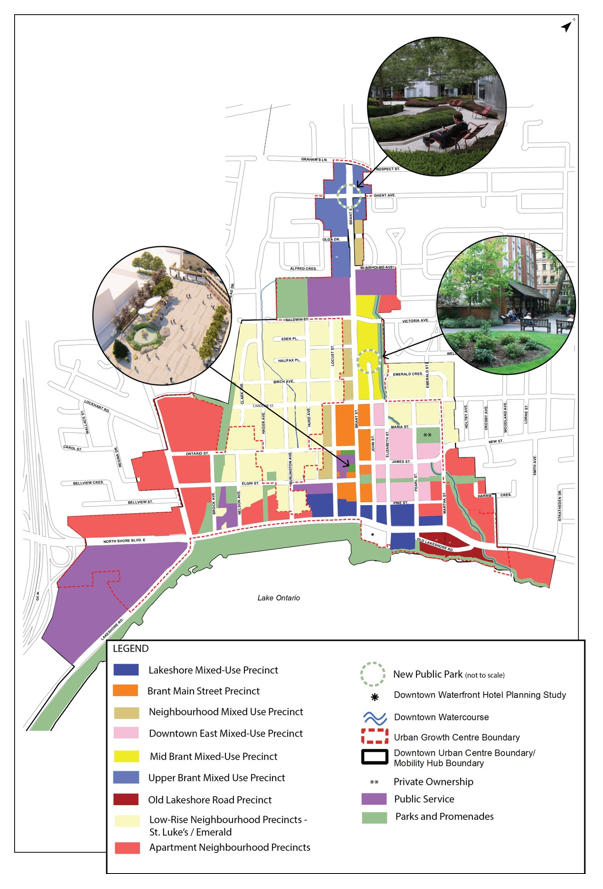
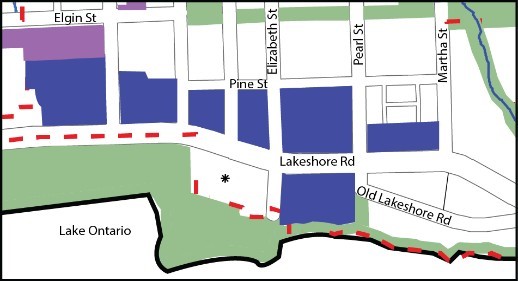 This area to many is the very heart of the city – directly across from Spencer Smith Park at the west end. All the land that has not been developed is in the hands of developers who have held it for some time. There will be a battle royal over what gets to be permitted. The Lakeshore Precinct is a new precinct which has been created out of the lower section of the previous Downtown Core Precinct in order to highlight the gateway nature of Lakeshore Road.
Vision: The Lakeshore Precinct will serve as the gateway to the Waterfront. This precinct will continue to develop as a priority retail main street particularly on the north side of Lakeshore Road. Permitted uses are primarily retail and service commercial uses on the ground floor with residential uses above. Lakeshore Road is identified as a Pedestrian Priority Street2 where the streetscape provides a safe and comfortable environment with Clear Path Zones3 and bump outs4 to narrow the distance to cross at key intersections.
The Precinct is largely developed with existing buildings ranging from 12 to 17 storeys on the north side of Lakeshore Road and one approved building of 26 storeys and with one site with permission up to 22 storeys on the south side of Lakeshore Road. Only parts of 4 blocks remain for redevelopment.
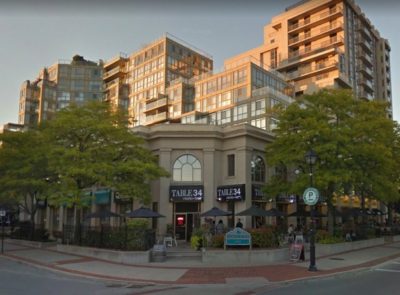 This is the kind of thing the Planners are putting forward as Concept 1 for this precinct. 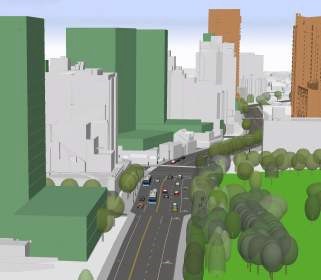 This is a 3D rendering of what the street will look like under Concept # 1
Concept 1:
On the remaining undeveloped blocks, a low-rise built form character will frame the street.
On the east side of Brant Street and north side of Lakeshore, only low-rise buildings will be permitted within the first 20 metres from Brant Street and Lakeshore Road.
On the remaining parts of these blocks tall buildings will be permitted.
Taller buildings will have a “slender” or point tower form with a maximum floor plate of 750m above the first 3 storeys.
Pros and cons for concept 1
Differs from the Adopted OP, which permits 12 to 17 storeys, by permitting only low-rise built form adjacent to the street with slender tall buildings being permitted 20 metres back from the street.
Maintains existing low rise-built form adjacent to the street and slender towers being set back from the low-rise towers.
Only 3 storey buildings permitted within 20 metres of Brant and Lakeshore.
Twenty metre depths provide flexibility to maintain existing retail stores or accommodate new retail space.
Tall buildings permitted in the back half of the blocks away from Brant / Lakeshore.
Concept 2
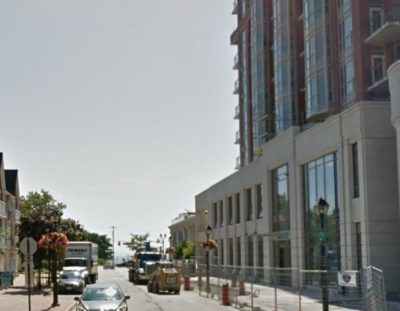 This is an example of what the streets would look like under concept # 2 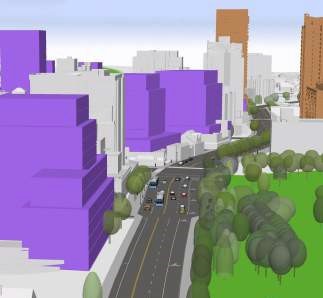 This is a 3d rendering of what the street might look like under concept 2 On the remaining undeveloped blocks, mid-rise buildings will be permitted.
Buildings that are mid-rise will incorporate a 3-storey podium with a minimum 3m setback.
Pros and cons for concept 2:
Differs from the Adopted OP, which permits 12 to 17 storeys, by lowering the height limit to a maximum of 11 storeys with a 3-storey podium.
Creates an opportunity for mid-rise built form by lowering the maximum building height to 11 storeys from 12 to 17 storeys.
To accommodate the lower density of mid- rise buildings, only a 3 m podium setback provided instead of the 20 metres.
Apartment towers may limit flexibility of retail space due to placement of structural columns.
On the remaining undeveloped blocks, a low-rise built form character will frame the street.
On the east side of Brant Street and north side of Lakeshore, only low-rise buildings will be permitted within the first 20 metres from Brant Street and Lakeshore Road.
On the remaining parts of these blocks tall buildings will be permitted
Taller buildings will have a “slender” or point tower form with a maximum floor plate of 750m above the first 3 storeys.
On the remaining undeveloped blocks, mid-rise buildings will be permitted.
Buildings that are mid-rise will incorporate a 3-storey podium with a minimum 3m setback.
Differs from the Adopted OP, which permits 12 to 17 storeys, by permitting only low-rise built form adjacent to the street with slender tall buildings being permitted 20 metres back from the street.
Maintains existing low rise-built form adjacent to the street and slender towers being set back from the low-rise towers.
Only 3 storey buildings permitted within 20 metres of Brant and Lakeshore.
Twenty metre depths provide flexibility to maintain existing retail stores or accommodate new retail space.
Tall buildings permitted in the back half of the blocks away from Brant / Lakeshore.
Differs from the Adopted OP, which
permits 12 to 17 storeys, by lowering the height limit to a maximum of 11 storeys with a 3-storey podium.
Creates an opportunity for mid-rise built form by lowering the maximum building height to 11 storeys from 12 to 17 storeys.
To accommodate the lower density of mid- rise buildings, only a 3 m podium setback provided instead of the 20 metres.
Apartment towers may limit flexibility of retail space due to placement of structural columns.
No tall buildings

 By Pepper Parr By Pepper Parr
November 27th, 2019
BURLINGTON, ON
The Gazette has, or is in the process of, publishing news stories on each of the nine precincts the city planning department set out.
Those precincts are a part of a plan for the downtown core that, once approved will be part of the city’s adopted but not yet approved approved Official Plan.
In order to get a bigger sense as to what the city could look like we have set out below a number of maps that provide detail for all of the downtown core including heights recommended for Concept # 1 and Concept #2, as well as maps showing where commercial and retail will be located and where the designated historical properties are located.
Immediately below is a map that shows the precinct boundaries. The maps that follow are overlays with very specific data.
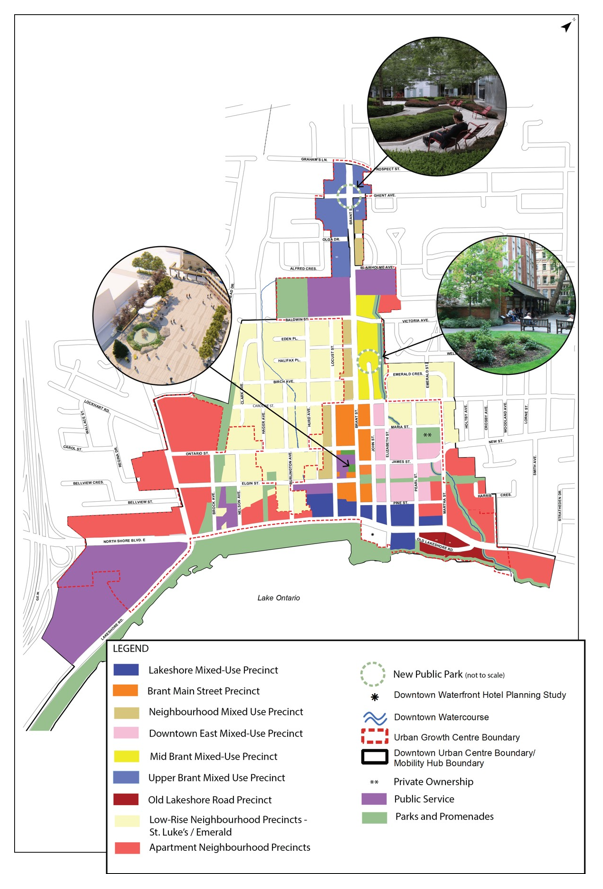 This map shows the boundaries for the precincts that will be created once the work on the revisions has been completed. 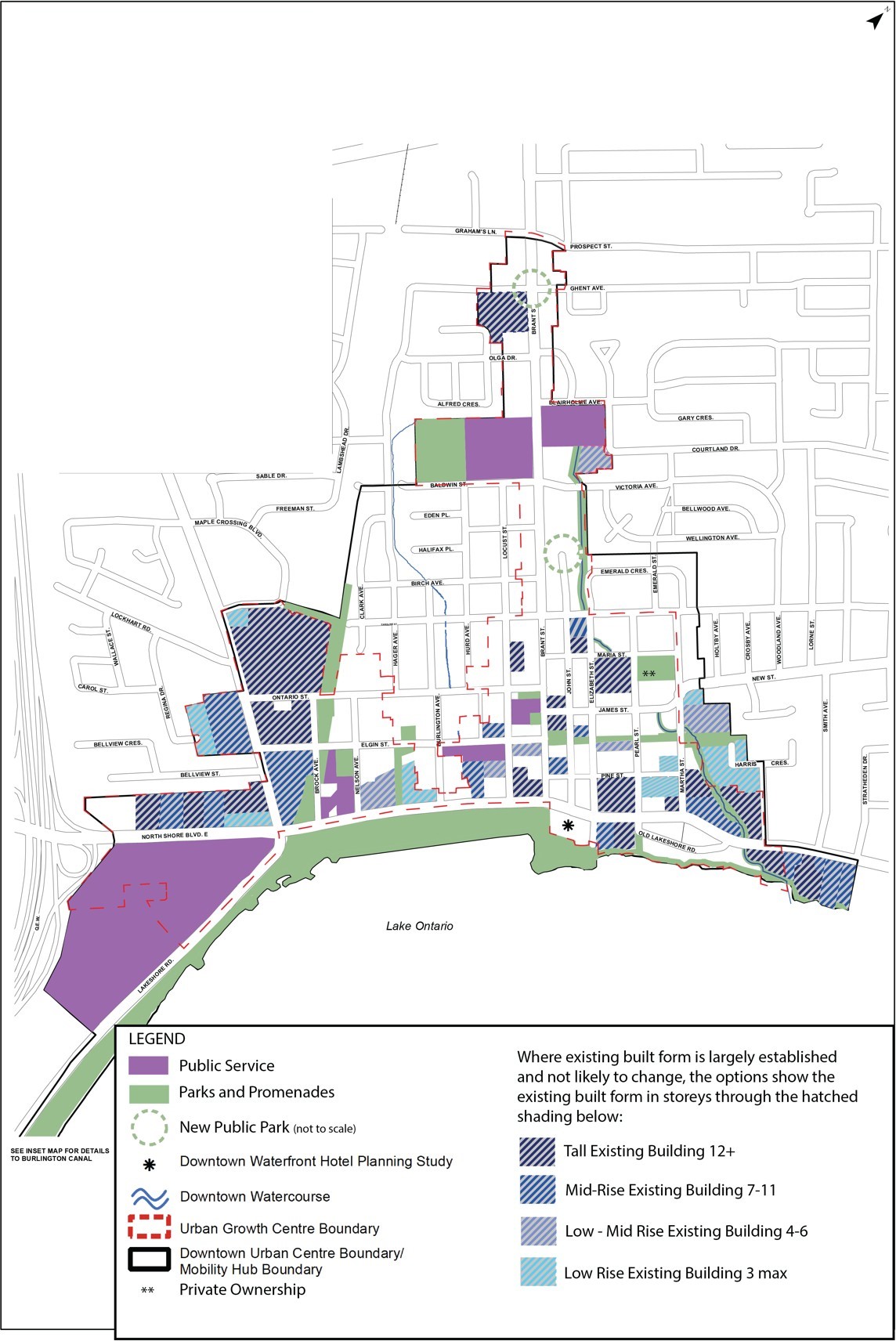 This map shows what has been built and what is planned. 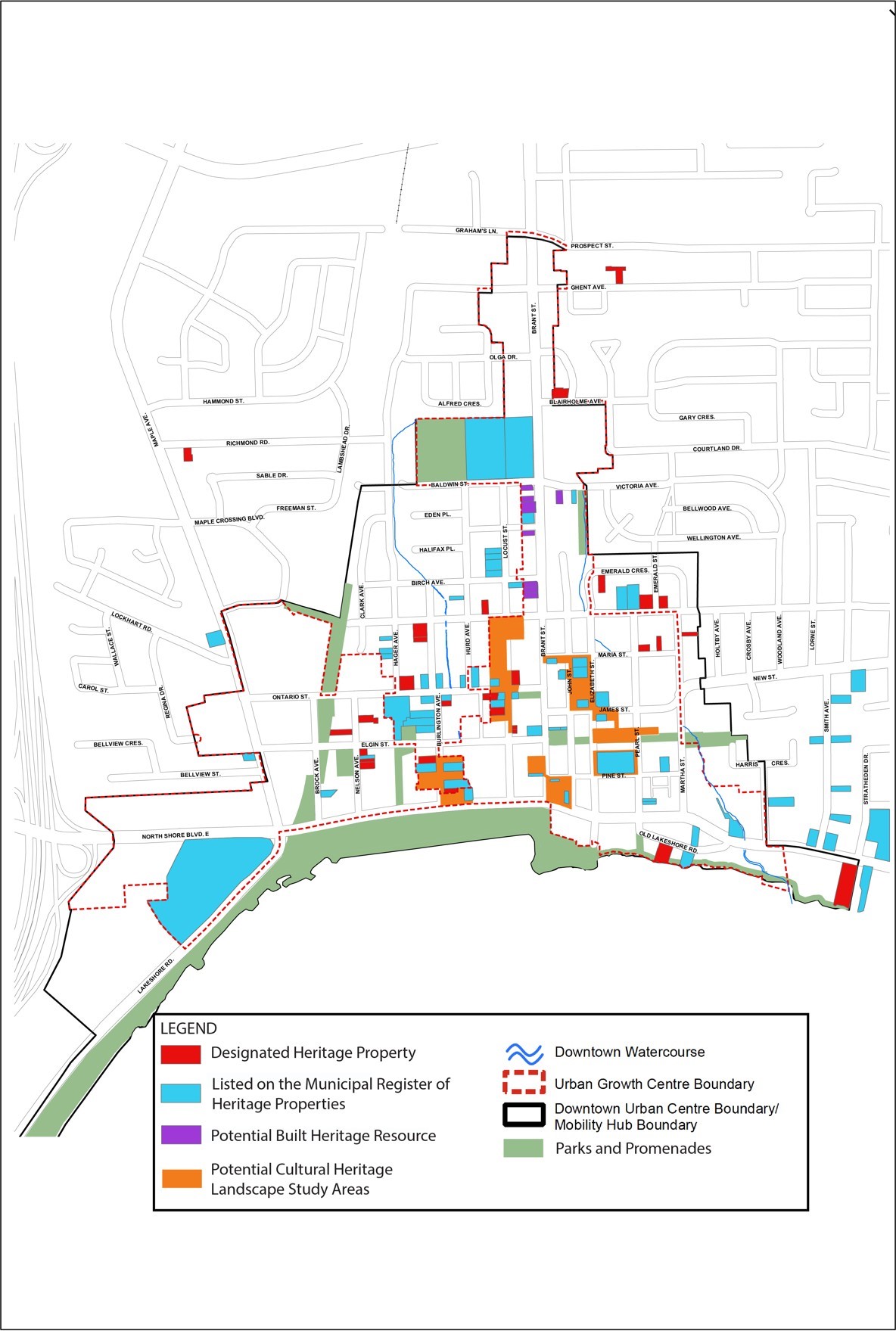 This map shows where the designated historical properties in the downtown core are located along with those that are on the city registry.
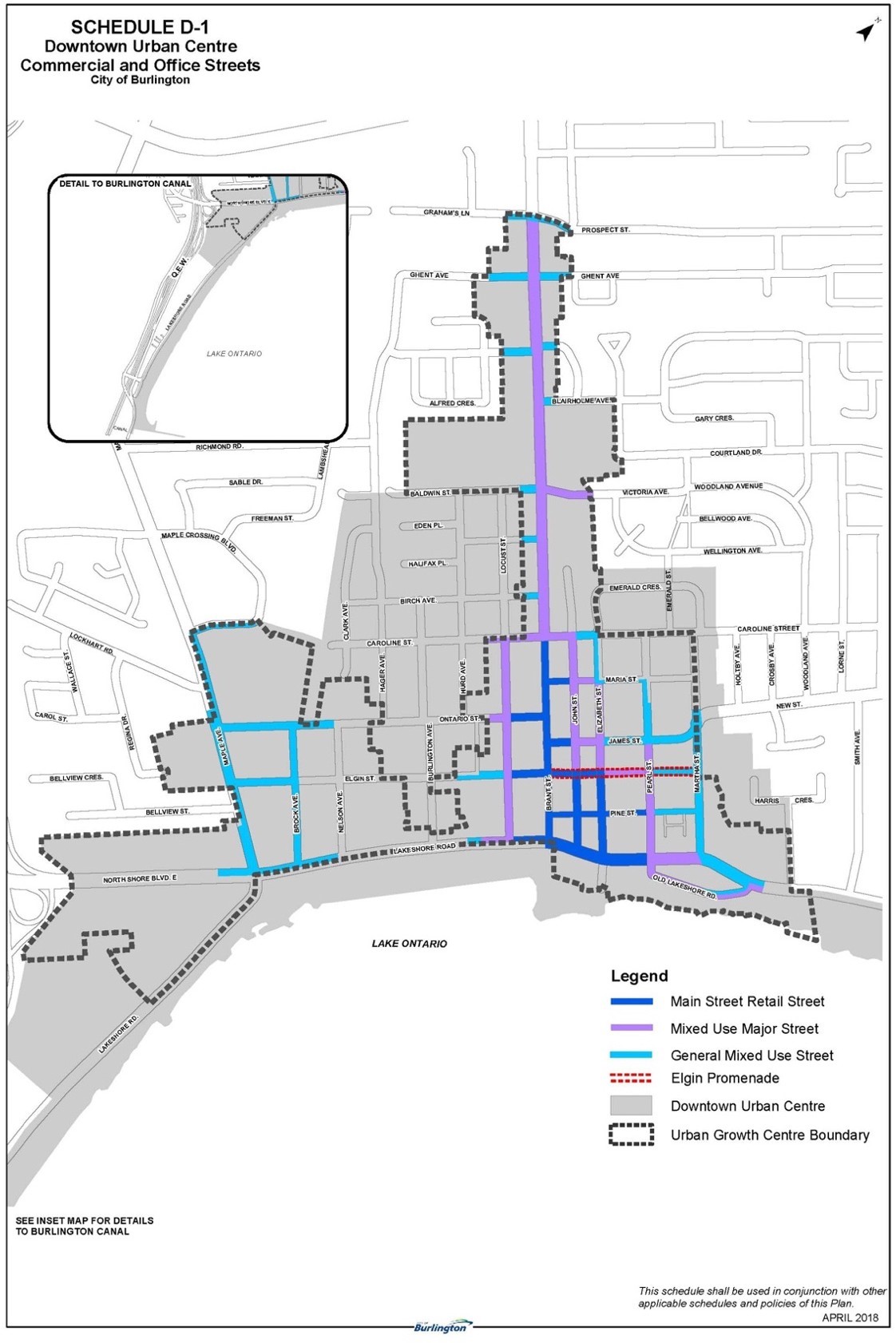 This map shows those streets that will have retail and other commercial operations. 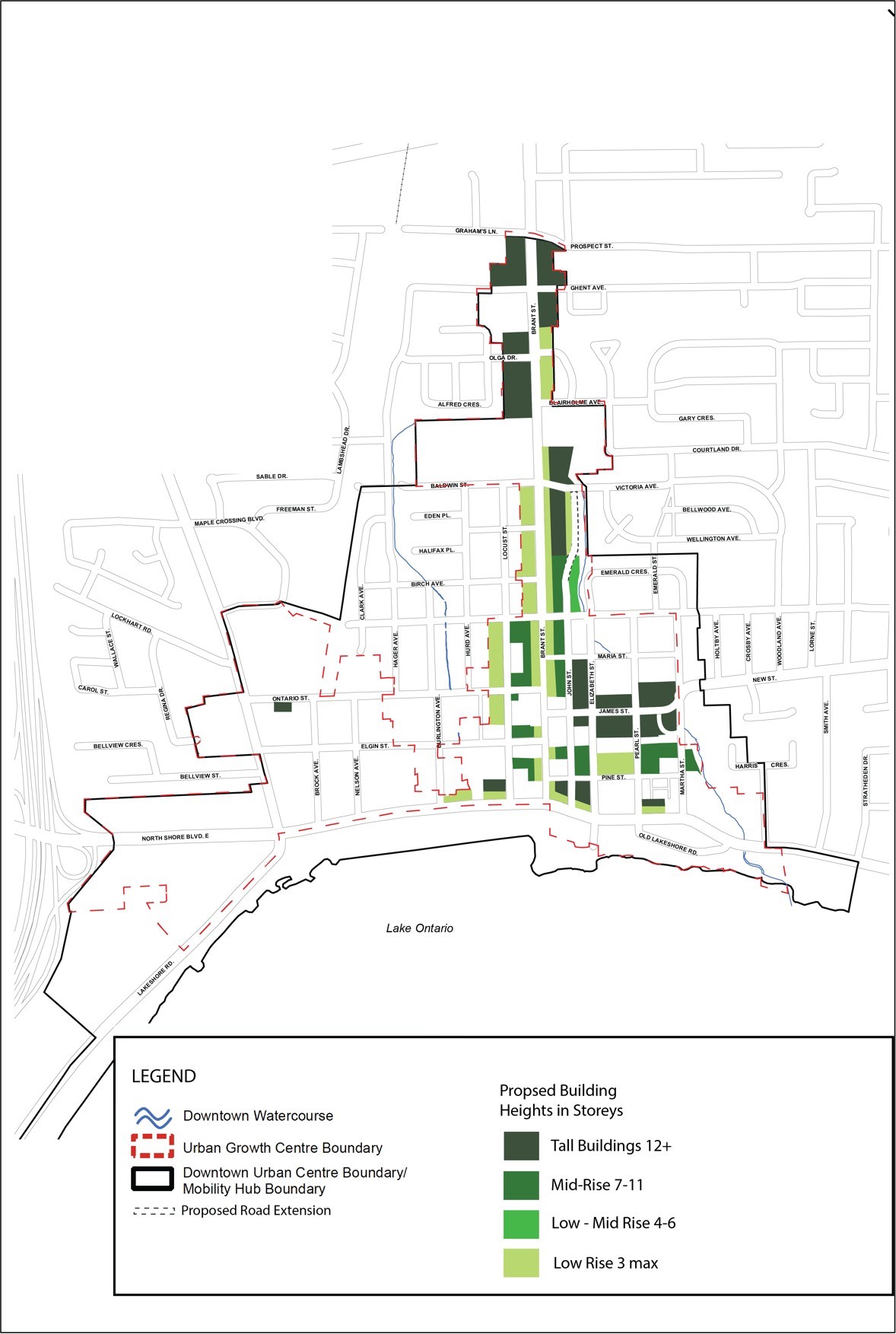 Proposed building heights for Concept 1 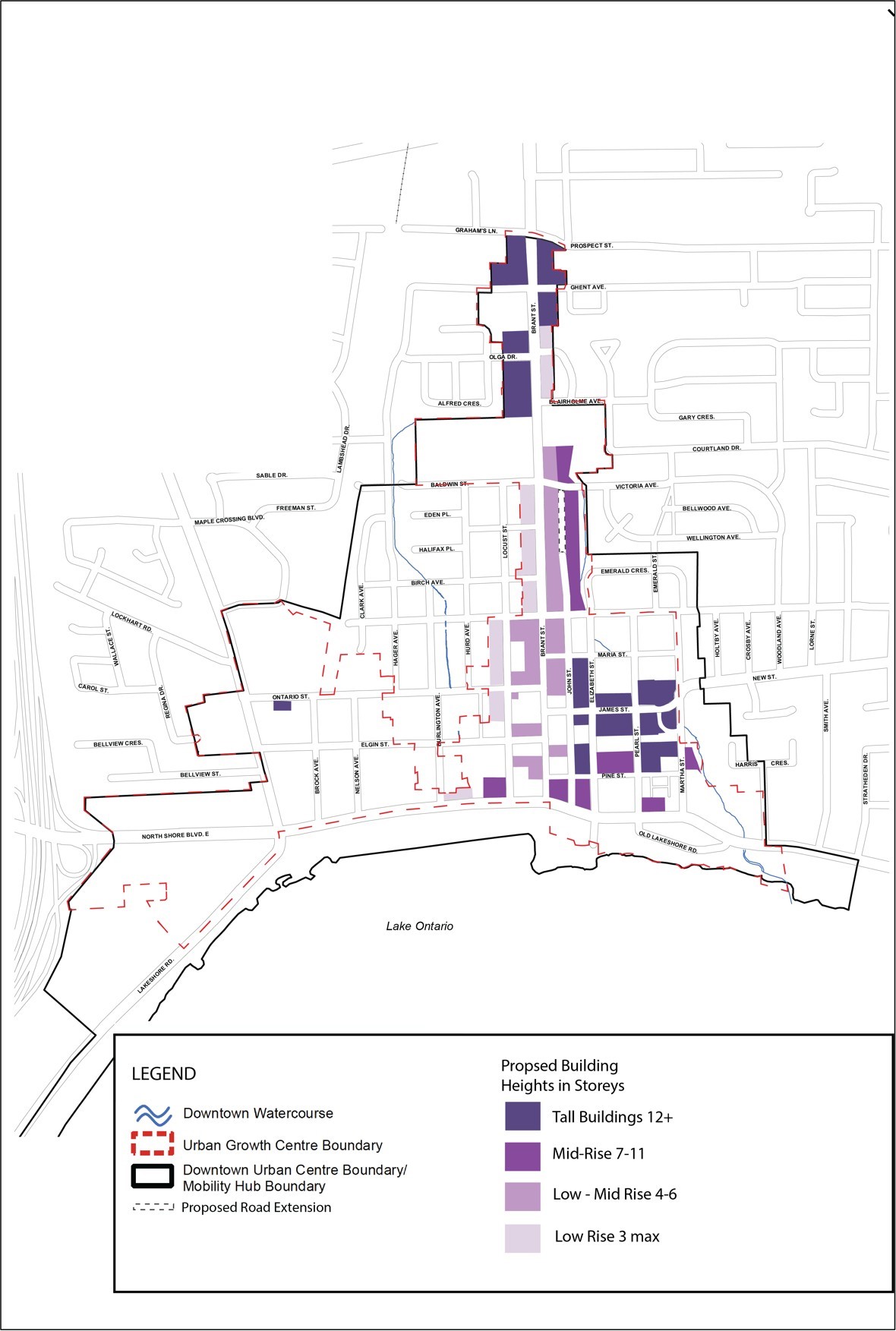 Proposed heights for concept 2 Related articles:
The outline

 By Pepper Parr By Pepper Parr
November 27th, 2019
BURLINGTON, ON
You are a police officer suddenly facing a delicate situation.
The person you are facing is threatening to harm themselves – they are holding a bottle filled with gasoline.
How do you de-escalate what is taking place? You are by yourself and think that calling for back-up will only make the situation worse.
The Halton Regional Police announced the launch of a virtual reality (VR) training program for its officers. The HRPS has partnered with Axon, the global leader in connected public safety technologies, and is the first police service in Canada to utilize Axon`s VR empathy-based training services.
 Police officers being trained on how to manage delicate but dangerous situations. A situation is displayed inside the “mask” that a police officer can interact with to learn different ways to handle different situations. VR is another tool in the Police Service`s existing and robust mental health training curricula. The program provides officers with an immersive training experience where trainees can put themselves in the shoes of both the officer responding to the scene and the person in crisis. Through this partnership, the HRPS will have access to three different VR training scenarios that Axon currently offers. In the future, the Service will use the insights of the many stakeholders in the community to develop additional training modules.
The HRPS has received 20 Oculus GO headsets from Axon, which will be used when training begins in early 2020.
 From left to right: HRPS Deputy Chief Roger Wilkie, Axon Managing Director Vishal Dhir, and HRPS Training Bureau Staff Sergeant Dave Tutte “Axon’s innovative empathy-based training will complement our existing training program and further enable our frontline officers to manage and de-escalate potentially high-stakes interactions,” says Deputy Chief Roger Wilkie, Halton Regional Police Service. “This partnership with Axon will ultimately serve to bolster community safety and well-being.”
For more information and a video demonstration of one of the programs being implemented, click here.
Mental health training remains a top priority for the HRPS and will serve to enhance the ability to meet the needs of the residents of Halton. The HRPS remains committed to working with the many community stakeholders and developing de-escalation based training for officers.
Axon is a global network of devices, apps, training and people that helps public safety personnel become smarter and safer.

 By Pepper Parr By Pepper Parr
November 27th, 2019
BURLINGTON, ON
We seldom think about a fire in a high rise – when we do, I think most of us shudder and say – this doesn’t effect me – I live in a house or a four story apartment building.
However, fires do take place in high rise buildings and Burlington appears to be in the process of putting up as many of them as possible.
 Halton Region Paramedic Services Operations Superintendent Michael Mitchell plans next steps. The Region, which is responsible for the Emergency Measure Operation Centre, held an Emergency Evacuation exercise on November 22 with the city to assess the Region’s plans.
The scenario focused on a fictional fire in a Burlington high-rise building, which required residents to leave their units and take shelter at the Region’s Emergency Evacuation Centre located at Haber Community Centre.
“This exercise was another step forward in our ongoing work to help protect individuals and families during emergencies,” said Halton Regional Chair Gary Carr. “Testing our response allows us to improve the way we deliver essential services and supports to residents. Our strong partnership with the Local Municipalities, first responders and community organizations ensures we are ready for emergencies in Halton.”
 Halton Region Children Services Supervisor, Stephanie Houghton, acting as the Haber Evacuation Centre Commander, briefs Canadian Red Cross volunteers. The exercise, “High-rise to Haber”, tested specific response processes, including how the Region and City would communicate with residents, partners and staff at the evacuation centre. Participants assessed their joint response to identify strengths, challenges and areas for improvement.
The following participants supported the emergency exercise:
• City of Burlington Recreation Services Department
• Canadian Red Cross
• St. John’s Ambulance Burlington
• The Canadian Mental Health Association (CMHA)
• Halton Region Paramedic Services
• Halton Regional Police Service
In addition to exercise “High-rise to Haber”, which was the largest scenario planned for 2019, the Region also participated in 12 smaller exercises and drills earlier this year. Emergency preparedness is a shared responsibility that involves residents, businesses, all levels of government and the community.

 By Pepper Parr By Pepper Parr
November 27th, 2019
BURLINGTON, ON
There are changes taking place within the transit service and in the way people are using transit.
Three of the new buses are now part of the fleet bringing it to 59 buses that require 111 operators.
The new grid system is in place and people are getting used to the improved connectivity that is seeing an increase in the number of connections between the routes.
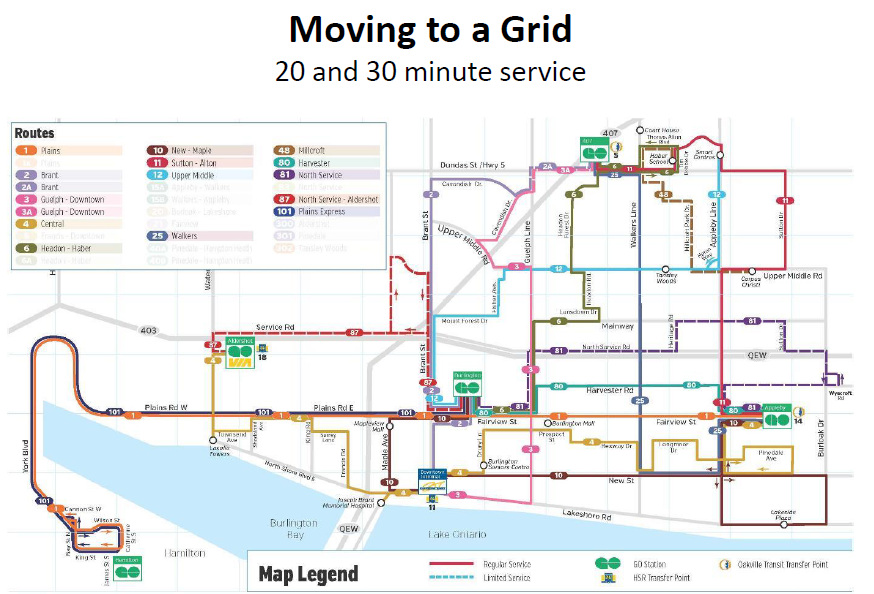 It took close to a decade for the transit people to come up with a grid system. Fine tuning and tweaking is being done now. Director of Transit, Sue Connors, is now well into applying her years of transit experience to Burlington’s situation. It was a mess before she arrived. The decision to hire her was one of the best former city manager James Ridge made.
Connor is in the process of putting together a five year Business Plan and at the same time readying the city for electric buses. She has pointed out that making the decision to go electric (which is really a given) is the easy part. Training staff and hiring mechanics who can keep the buses going is what will take time.
Edmonton is doing a pilot that everyone is watching: if the electric bus can work in the Edmonton environment they will work almost everywhere.
The expectation is that Oakville will be the first community in the Halton Region to start using electric buses.
 If a bus is late – it can signal a traffic light and will be given priority to run through the intersection. System is being piloted on Fairview Traffic lights technology– or what is often called “priority transit signals” are going to be piloted along Fairview. The system will know if a bus is on time – if it isn’t, traffic lights will give the bus priority so that it can get caught up. If bus service is going to get people where they want to go – connections between routes will be critical.
The GO train system allows dogs on their equipment; Burlington doesn’t. The transit people are working on sorting out that problem.
An interesting bit of information came to the surface during the Integrated Mobility Advisory meeting. The city is measuring almost everything that moves in the city. They want to know where people walk; where they bike, how and when they use transit; we will all know how often cars are used.
 The Elgin Promenade begins at Brant and runs east. The Elgin promenade which stretches from Brant Street east to Pearl, is part of a bigger trail system that gets you to the canal in the west and eventually all the way to the Oakville border. A traffic counter has been installed along the Promenade – it measure how many people walk by – a surprising 500 people each day. People are out walking.
Using bikes on city streets has its own set of problems. The bike lane on Maple was made a little wider but unfortunately had to end at Lockhart – a block or two from Lakeshore – there just wasn’t room enough for the bike lane.
That cut-off prevents people from cycling along to Lakeshore Road and through the Beachway to the canal or into Spencer Smith Park.
A problem that has to be worked on.

 By Staff By Staff
November 27th, 2019
BURLINGTON, ON
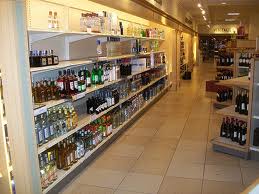 Thieves decided to stock up early on their Christmas Cheer – fill duffel bags and a suitcase and forget to pay on the way out. In October 2019, the Halton Regional Police Service investigated a series of thefts from LCBO stores within the Region. During the incidents the accused parties entered LCBO stores and proceeded to fill duffle bags and suitcases with several bottles of alcohol and exited the stores without making any attempt to pay for the merchandise.
Police worked in co-operation with LCBO investigators to identify the persons responsible.
The following parties have been arrested and charged with several offences in relation to this investigation;
Sule McClymont (41) of no fixed address is charged with:
• Theft Under $5000 x 4
• Fail to Comply with Probation
Maurice Antoine (48) of Toronto is charged with:
• Theft Under $5000 x 3
Trevel Provo (37) of no fixed address is charged with:
• Theft Under $5000 x 4
• Fail to Comply with Probation x 2
Anyone with further information relating to these incidents is asked to contact Detective Clay Gillis of the 3 District Criminal Investigations Bureau at 905-825-4747 ext 2307.
Tips can also be submitted to Crime Stoppers “See Something? Hear Something? Know Something? Contact Crime Stoppers” at 1-800-222-8477 (TIPS) or through the web at www.haltoncrimestoppers.ca.
Please be reminded that all persons charged are presumed innocent until proven guilty in a court of law.
Did they really think they would get away with it?

 By Staff By Staff
November 26th, 2019
BURLINGTON, ON
On November 25, 2019, a Stoney Creek man arrived at the Halton Regional Police Service 2 District (Oakville) station on a motorcycle to pick up a recently released prisoner. Observations made by uniform officers determined the plate on the motorcycle to be incorrect, which led to further investigation.
An in depth inspection of the motorcycle revealed the vehicle identification number (VIN) had been tampered with and the motorcycle was, in fact, stolen from Hamilton. The male was subsequently arrested and found to be in possession of three schedule 1 substances and a conducted energy weapon (commonly referred to as a ‘Taser’).
Kyle Brocklebank (31) of Stoney Creek has been charged with:
• Tampering with Vehicle Identification Number
• Possession of Property Obtained by Crime over $5000
• Unauthorized Possession of a Prohibited Weapon
• Fail to Comply with Recognizance
• Fail to Comply with Probation Order
• Possession of a Controlled Substance (X3)
Brocklebank was held pending a bail hearing on November 26, 2019.
Please be reminded that all persons charged are presumed innocent until proven guilty in a court of law.
Anyone with information is asked to contact D/Cst Matthew Duncan or the Oakville Criminal Investigations Bureau at 905-825-4747 ext. 2216.
Tips can also be submitted to Crime Stoppers “See something? Hear something? Know something? Contact Crime Stoppers” at 1-800-222-8477 (TIPS) or through the web at www.haltoncrimestoppers.ca.

 By Pepper Parr By Pepper Parr
November 26th, 2019
BURLINGTON, ON
Earlier today Mayor Marianne Meed Ward released a statement setting out how “shocked and disturbed” she is over the spilling of waste into Cootes Paradise that took place during a period of time that is measured in years.
The news of the spill broke more than five days ago – what took the Mayor so long to prepare and issue a statement? – looks like public posturing.
 The Mayor said: “Like residents of Burlington, Hamilton and neighbouring municipalities, I am shocked and disturbed to hear of the massive sewage spill into the Cootes Paradise watershed. Like many, we are left asking how such a thing could have happened over such a long period of time, what the impact is to the environment and our residents, and why the public, and partnering municipalities and agencies were not notified. The Mayor said: “Like residents of Burlington, Hamilton and neighbouring municipalities, I am shocked and disturbed to hear of the massive sewage spill into the Cootes Paradise watershed. Like many, we are left asking how such a thing could have happened over such a long period of time, what the impact is to the environment and our residents, and why the public, and partnering municipalities and agencies were not notified.
“We are aware that the Ministry of Environment, Conservation & Parks is investigating, and we look forward to a full understanding and public reporting of what occurred. However, we shouldn’t have to wait to hear about sewage spills at the conclusion of a Ministry of Environment investigation; this is an environmental and public health issue that needs to be addressed collectively right away.
“There are more questions than answers at this point, and Burlington will be requesting a full response to these questions on behalf of all residents impacted in our area communities including:
“1. What is the human health impact to residents living around the Bay, or who have enjoyed recreation at the Bay? What is the impact to the ecology of the Bay, and plants, wildlife? How will the impacts of the spill be remediated?
“In this endeavour, Burlington stands ready to assist, as we have in the past on the Randle Reef cleanup ($2 million contribution) and Cootes to Escarpment eco-park initiatives.
“We need these answers immediately.
 In a release on Wednesday, the City of Hamilton admitted 24 billion litres of sewage spilled into Chedoke Creek between January 2014 and July 2018. In a release on Wednesday, the City of Hamilton admitted 24 billion litres of sewage spilled into Chedoke Creek between January 2014 and July 2018.
“2 – How can we ensure this never happens again? How did this happen over a long period of time without being detected and immediately addressed? Do we have appropriate monitoring protocols in place to test water, raise red flags and prompt investigations when contaminant levels are elevated?
“3- Is there provincially mandated public reporting of any spills that affect air, land or water, and if not, why not?
“We will be seeking that the province implement immediate mandatory public reporting of any spill that has the potential to contaminate land, air or water. In the meantime, I commit to voluntary reporting and to look into whistleblower policy protections; I will encourage area municipalities and regions to do the same.
“Had this been in place, Burlington and agencies with a role and stake in Cootes Paradise would have been immediately notified of the spill, along with the public. We should not have to learn about contamination of our shared water from media reports.
“As we go forward, looking for answers, preventative action and remediation, Burlington stands ready to help.
“The City of Burlington and the City of Hamilton are neighbours and our friendship and history of working collaboratively together goes back many years. We are also partners in many formal areas, such as the cleanup and remediation of Randle Reef, our shared work of traffic management in the Waterdown Area, and as part of the Bay Area Climate Change Office, to name just a few. Given this relationship, along with our shared watershed and potential impact to residents, it is unacceptable that we (and the public) were not been notified of this spill in a timely and direct manner.
“We are focused on getting answers, making sure something like this doesn’t happen again and doing what is necessary to cleanup the mess in our shared watershed.
“I’ve had an opportunity to speak with Councillor Lloyd Ferguson, Chair of the Public Works committee and member of the Royal Botanical Gardens and Hamilton Conservation Authority Boards, as well as Maureen Wilson, Deputy Mayor, to share our concerns and questions and formally ask for the release of all documents to the public and ourselves.
“I have a scheduled (sic) called (sic) with Mayor Fred Eisenberger to share the same information and request.
“As we did before with the clean-up of Randle Reef, the City of Burlington is ready to help our neighbour and partner for the greater good. The environment, clean water and clean air are not confined to narrow municipal boundaries and the impact and resolution of this issue isn’t either.”

 By Pepper Parr By Pepper Parr
November 26th, 2019
BURLINGTON, ON
On December 5th, city council is scheduled to take a look at The Closer Look they have been asking citizens to take on how we are revising the adopted Official Plan.
What hasn’t been crystal clear until earlier today is whether or not the meeting is a Committee of the Whole, at which delegations are not heard or if it is a Planning and Development Standing committee meeting at which delegations can be heard.
For those who keep a very close eye on what comes out of the Planning department the difference is critical – they have a lot to say about how this Taking a Closer Look exercise has been handled.
Discussion about the re-examination of the downtown policies in the adopted Official Plan will continue at a Burlington City Council Planning and Development Committee meeting on Thursday, Dec. 5 at 9:30 a.m. from 9:30 a.m. to 4 p.m. and reconvening at 6:30 p.m. at City Hall in Council Chambers at 426 Brant St. City Council will consider a staff report. Delegations will be heard.
 It’s an ambitious time line. This phase of getting an Official Plan in place that meets the needs of the city and its citizens and can be defended at whichever tribunal a matter gets taken to is critical. Both Council and the city want to get it right.
The team that has been working with the community, as well as liaising with anyone else at city hall who is involved in Planning – this includes the people who are working with consultants on the Interim Control Bylaw that is in place, whatever work that is being done on the Mobility Hubs; there are others.
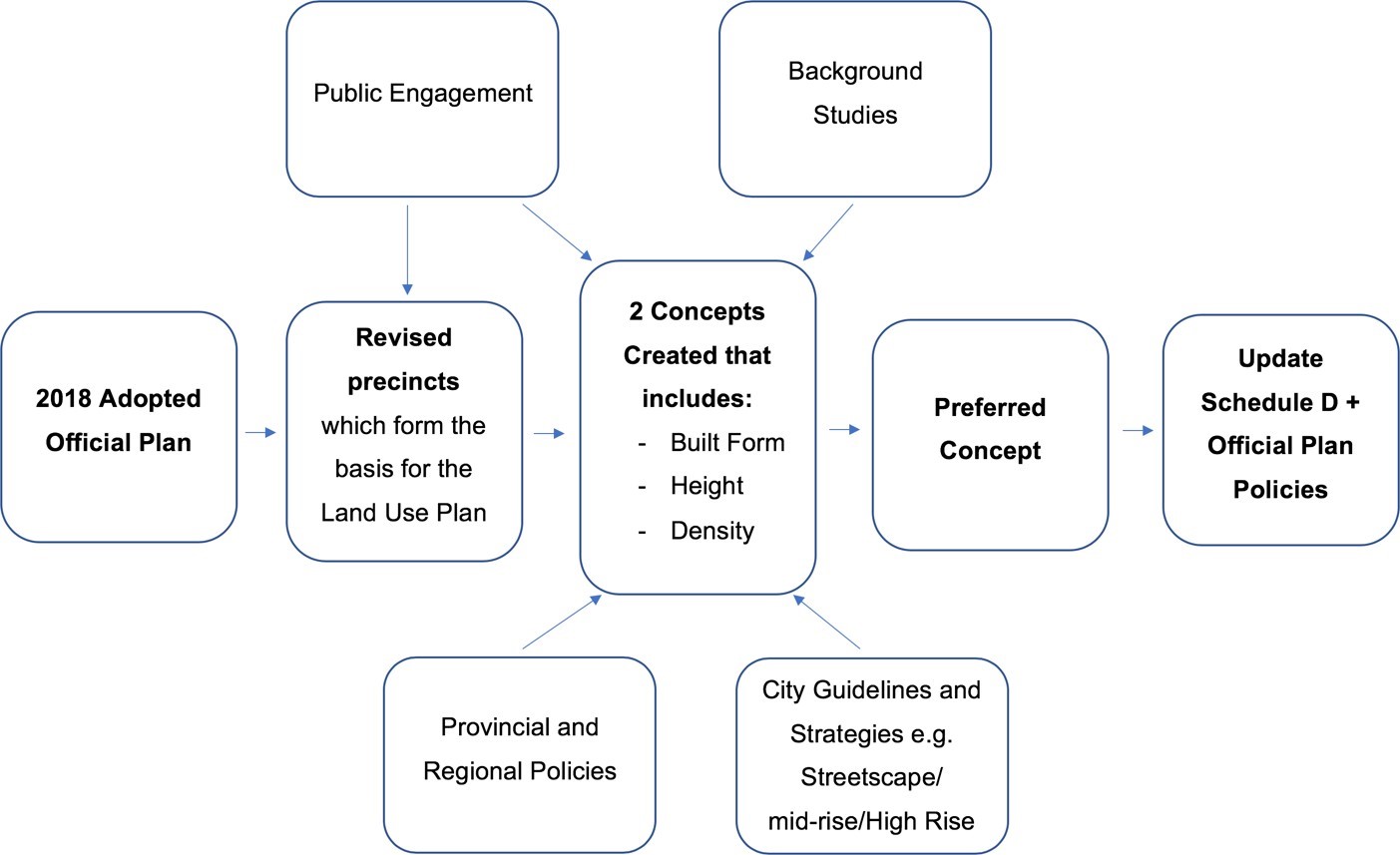 The process – you are part of it – do your homework. The December 5th meeting is scheduled to look at the two concepts for each of the 11 precincts that have been created for the Downtown. The two proposed concepts for each precinct are distinct and provide different ways in which to achieve the overall vision.
 These are the boundaries for each precinct; a precinct is not necessarily one contiguous piece of land. The important part of the precinct is the way it is defined. This going to be a long long meeting and it is unreasonable to expect the average citizen to understand very much of what has been gathered and distilled by the planners.
The outcome of this work will be modified policies that will guide development in the Downtown until 2031, including the height and density of buildings. The modified policies will be informed by both the public engagement and finalized technical reports.
The policies will be documented in a Final Report prepared by SGL Planning and Design Inc. and will be forwarded to Burlington City Council in March 2020 for their adoption.
But we aren’t there yet.
The next step is hearing what the Planners have determined based on public input to this point.
So what is the public going to be presented with?
It is complex.
The review is limited to the Vision for the Downtown, the Precincts.
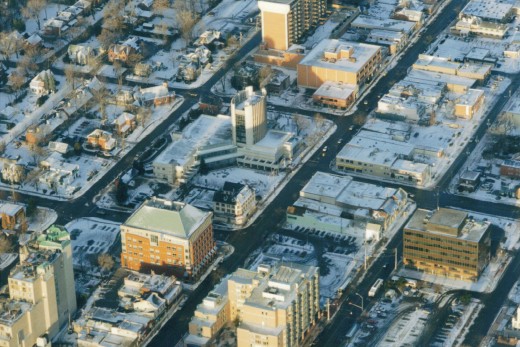 City Hall and surrounding area winter of 2000 The public’s vision for the Downtown is to provide for a walkable, accessible, vibrant downtown. The public’s vision also stresses the need to maintain and add new green spaces and trees, while providing additional space for year-round activities and festivals. The character of Brant Street as the ‘retail main street’ of Burlington with its eclectic mix of shops, meeting places and culture will be supported and enhanced.
Lakeshore Road as the gateway to the waterfront will be maintained as an important pedestrian precinct to ensure the Downtown’s sense of place is preserved.
What the public will be shown is two different concepts for each precinct with a host of pros and cons for each. What we have seen so far of those concepts is disappointing but we will leave it to the public to decide if the graphics are of any use.
 Everyone gets a chance to say what they think; the technical people lay out the facts – YOUR council makes the final decision. More than a year ago the city set out what the precincts were to be. Now that the Official Plan that was sent off to the Region – which the Region sent back as incomplete and the results of the October 2018 election – a whole new and quite different look has taken place – and there are now new precinct boundaries.
The guiding word at this point is “concepts”; those are what the public is going to see and hear defended by Staff on December 5th.
Those “concepts” gird the development and evaluation of alternative land use and built form concepts.
This Phase 2 work will identify principles, vision and alternative concepts for discussion. The principles and vision have been informed by the feedback from the August public engagement events. The basis for the concepts were then informed by both the principles and by changes to the Precincts.
Are you still with me?
The concepts are to be evaluated based on criteria already in place.
The concepts prepared for discussion are to help inform the development of a preliminary preferred concept plan. The graphic below details how the concepts were developed.

What are the Themes and Principles?
Glad you asked. The comments heard at the public engagement events were grouped into 13 themes. For each of these themes, a series of Principles were identified. The Principles are action-oriented directions that the City can use to guide change in the Downtown.
These Principles were used to confirm the vision for the Downtown and to develop the proposed concepts. The Principles were also used to develop criteria to assist in the evaluation of concepts.
From the public engagement feedback, it was clear that residents saw the Precincts differently. Their focus was on Lakeshore Road and Brant Street and they differentiated Brant Street between north and south of Caroline Street and also north of the schools and Blairholm Avenue. The Precincts were simplified with a focus on their location and function.
To simplify the precincts and to better align with their intended function, the precincts are proposed to be changed by:
1. Redefining the Downtown Core Precinct into three new precincts: Lakeshore Mixed-Use; Downtown East Mixed-Use; and Mid Brant Mixed-Use;
2. Focusing the Precincts along Brant and Lakeshore;
3. Renaming precincts to focus on location and function;
4. Revising the visions for each precinct;
5. Referring to “Parks and Promenades” and “Public Service” as land uses; and
6. Adding a new park.
Lakeshore Mixed Use Precinct
Brant Main Street Precinct
Neighbourhood Mixed Use Precinct
Downtown East Mixed Use Precinct
Mid Brant Mixed Use Precinct
Upper Brant Mixed Use Precinct
Old Lakeshore Road Precinct
Low Rise Neighbourhood Precincts/ St. Luke’s – Emerald
Apartment Neighbourhoods Precincts
Public Service
Parks and Promenades
The previously defined Downtown Core precinct has been divided into three new precincts – Lakeshore Mixed-Use, Mid Brant Mixed-Use; and Downtown East Mixed-Use.
These new Precincts reflect the public feedback related to the uniqueness of each area and the importance of Brant and Lakeshore. In order to incorporate some of the public comments, the visions for each Precinct were re-visited and updated. Some Precincts were re-named to better express the location of the Precinct, its character and function.
Parks and Promenades and Public Service lands are land uses that are located throughout the Downtown and, as such, have been identified by their land use and not as precincts. Finally, based on the comments received, a new park at Brant and Ghent is being proposed.
It was also necessary to take the following factors into account when developing the land use concepts: existing context; other related City policy; Provincial and Regional policy; and the directions given by Council for the re- examination including specifying 2031 as the planning horizon.
Within each Precinct, there is an existing context of built and approved residential towers, office buildings and heritage buildings that is not anticipated to change before 2031 but which influences the character of the precinct.
Keeping on top of all 11 precincts is a challenge. The Gazette will publish an article on each of the 11 precincts which will be added to this news story.

 By Staff By Staff
November 26th, 2019
BURLINGTON, ON
There is a notice appearing on many of the city’s web sites advising people that:
 The people in this Provincial Offences Court House have not telephoned you and will not arrest you. It is part of a cunning scam. Halton POA Court’s phone number is being been used in a phone scam. If you get a recorded message from 905-637-1274 please ignore the message.
Halton POA Court is not working with Revenue Canada to collect unpaid fines and does not issue warrants for arrest for unpaid fines.
The scammers are getting more creative.
Golden Rule – If in doubt – don’t

 By Pepper Parr By Pepper Parr
November 26th, 2019
BURLINGTON, ON
We took in one of the Advisory meetings last night. The Integrated Transportation Advisory Committee was meeting with a decent agenda but no quorum for the first while of the meeting.
There was an update from Catherine Baldelli from Transit. She passed on what Council had learned earlier – transit use is up; as much as 13% on some routes.
The data is still being worked through to learn where the increase is taking place and then where is it coming from.
 Transit use is up – a good sign. Chair Kerry Eaton runs a meeting that flows nicely and pulls in the views of anyone who has something to say.
The Accessibility Advisory; the Cycling Advisory; the Seniors Advisory and the Sustainable Development Advisory are all part of the Integrated Transportation Advisory (ITAC). What they’ve done is something very sensible – created committees that look at a number of interests instead of having a bunch of committees that sit as silos. Kudos to whoever brought that about.
There were a number of matters covered that we will deal with going forward.
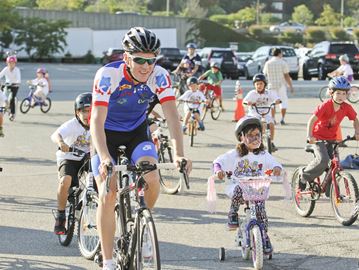 The city wants people to make more use of bicycles – and not just for pleasure – using a bike for running small errands is the direction the city want to go. Will the public buy into it? Cycling is getting attention.
Former city manager James Ridge liked the idea of Burlington having a ride share system similar to the one Hamilton has – his hope was that Burlington might be able to buddy up with Hamilton and use the same platform.
THAT isn’t going to happen. Seems that the bicycle ride share business has changed – no one wants to put a bunch of bikes on the street and look for revenue from those who rent the bikes to cover the costs. The costs weren’t getting covered.
Dan Ozimkovic told the committee that the cycling types were looking at options – no date on when something might get sent along to council for consideration.
Many years ago there was conversation at Council about a bridge – just for cyclists and pedestrians that would cross over the QEW.
The question was where would such a bridge be placed ? The cost is a major issue but the location has to be determined before costs get attention.
The “preferred location at this point is in the Brant – QEW area; nothing more than that at this point other than the committee wants the bridge to lead to some of the trails in the city.
 Is a bridge something like this in the works for Burlington – a way for cyclists and pedestrians to get across the QEW. The good news is that the project is getting looked at – hopefully someone is looking at what federal or provincial funding might be available.
Doug Benton wondered aloud if there was not some way to create a Kiss & Ride in the Brant – Fairview area. Turns out he drops his wife off in the Upper Middle Road and Brant area where she can get the bus she needs. There isn’t a convenient place for him to pull in and drop her off or wait for her when she is coming home.
There were a number of “possible ideas” that were floated and there were some interesting stories on how people are using the bus. One woman who took advantage of the free service for seniors during the off-peak hours told Catherine Baldelli that she travelled around on the bus just to get out of the house and be with people. It was this citizen’s way of being with people.
Transit it appears is more than transportation.
Good things coming out of this committee – worth watching.
I recall a past transit committee meeting at which members were throwing copies of the agenda at each other – chaos for the most part.
An observation – there was no council representation at the meeting – a good thing?

 By Staff By Staff
November 26th, 2019
BURLINGTON, ON
Halton Region, which usually takes care of the garbage removal and ensures that water comes out of the taps also does some short term, short range investing in the municipalities.
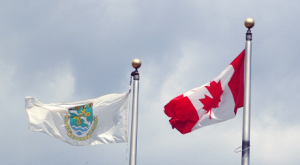 Region partners with any government that will write a cheque.
The Region is investing more than $316,000 in community safety and well-being initiatives through the Halton Region Community Investment Fund (HRCIF). The funding, which is dedicated to supporting emerging community safety and well-being initiatives in 2019, will be provided to five community organizations to assist Halton’s older adults, youth or those at risk of homelessness.
“Since 2012, the HRCIF has been helping enhance how our communities support the health, safety and well-being or our residents,” said Halton Regional Chair Gary Carr. “This investment will help continue that work by addressing community safety and well-being priority issues in Halton, including homelessness prevention, isolation among older adults and support for youth exiting child welfare services.”
In 2019, the HRCIF has awarded nearly $2.7 million in funding (including this $316,000 investment) to a wide range of non-profit health and social service programs that enhance the health, safety and well-being of Halton residents. The HRCIF is part of Halton’s overall approach to community safety and well-being planning and supports a holistic response to human service needs.
The $316,000 earmarked for community safety and well-being initiatives will be provided to the following organizations:
• Home Suite Hope to develop a pilot project to enhance access to life skills programming for individuals at risk of homelessness.
• Links2Care to identify and support older adults who are isolated or at-risk of isolation.
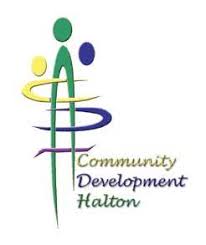 • Community Development Halton to enhance the Halton Senior Connectors program, which offers resources and referrals for older adults. • Community Development Halton to enhance the Halton Senior Connectors program, which offers resources and referrals for older adults.
• Oakville Meals on Wheels to support the agency’s ongoing operations of delivering meals to older adults and preventing isolation.
• Halton Children’s Aid Society (CAS) to create two housing opportunities through the Halton CAS Host Home program.
These community partners and many other organizations from across Halton continue to work closely with the Region and the Halton Regional Police Service to implement strategies that support the health, safety and well-being of residents.

 By Pepper Parr By Pepper Parr
November 25th, 2019
BURLINGTON, ON
Pam Damoff, Member of Parliament for Oakville North Burlington, may have thought she had gotten a break when she was made Parliamentary Assistant to the Minister of Health.
It didn’t work out that way. Despite getting a whopping margin over the Conservative candidate former Ministry of Health Ginette Petitpas Taylor was not invited back into Cabinet.
She was appointed the Deputy House Whip – that’s not even a sideways move.
 Pam Damoff in conversation with former Ministry of Health Ginette Petitpas Taylor. Damoff had been appointed her Parliamentary Assistant Damoff of course held her Oakville North Burlington seat by a respectable margin. During her first term of office she didn’t embarrass herself and she was a very strong advocate on women’s issues – but she didn’t shine.
The appointment as a Parliamentary Assistant was a good career boost though it seemed as if she was on a Snakes and Ladders Board – and had slid down a couple of notches.
In her Newsletter to constituency residents Damoff said:
“A month ago, Canadians chose to re-elect a Liberal government on an ambitious and achievable platform that will help more people make ends meet, make life easier for parents and families, protect our environment, and keep our economy strong and growing. While I am proud of our accomplishments over the last four years, there is much more work to be done, and I am excited to get started.
“We were elected with the only plan that takes climate change seriously, recognizing it for the threat it poses to our economy, health, public safety and way of life, and we have the experience and the capacity to deliver on our commitments.
 It was as cold as it looks: Pam Damoff, centre doing a New Years Day Polar Dip “Building on the work we did over the last four years, we will make sure young people have access to education, housing and employment by enhancing Canada Student Loans, investing in jobs for youth, and making home ownership more accessible. We will make our communities safer and healthier with a ban on military-style assault rifles and the introduction of a national universal pharmacare plan.
We will continue to be a strong voice for Canada on the world stage, and we will always stand up for the rights of Canadians — for women’s reproductive and sexual health, for LGBTQ Canadians, for indigenous people and for those living with a disability.
What Damoff didn’t say was if she was going to do that Polar Dip thing on New Year’s Day.

 By Pepper Parr By Pepper Parr
November 25th, 2019
BURLINGTON, ON
The Burlington Performing Arts Centre is doing what they are there to do. Bring world class performances to the city.
The Nutcracker is a must see for every young person who is going to have at least an understanding of the arts. For the truly young it is spectacular; for those in high school and their parents it is great performance.
The Russians do The Nutcracker superbly – the National Ballet Theatre of Odessa’s production of The Nutcracker is in town for three performances from December 6-7, 2019. (Some of the people of the Ukraine are going through a bit of a war trying to get out from under the thumb of the Putin Russian government.)
 Energy and colour – will delight the eyes and hearts of the very young. The dancers will dazzle Burlington audiences with the timeless holiday classic. Set to Tchaikovsky’s music, including Waltz of the Flowers and Dance of the Sugar Plum Fairy, The Nutcracker is a cherished holiday adventure that follows a little girl’s journey through a fantasy world of fairies, princes, toy soldiers, and an army of mice.
Following in the footsteps of Moscow’s famous Bolshoi Ballet, The National Ballet Theatre of Odessa (which happens to originate in Ukraine) will be dancing the same classical choreography with 55 of the Ukraine’s brightest ballet stars. This production of The Nutcracker has fast become a Burlington family tradition for the young and young at heart.
The Odessa National Academic Theatre of Opera and Ballet is the oldest theatre in Odessa, Ukraine.
 Classic ballet – the performances show the way it is supposed to be done. It is not cheap –
Regular: $69.50 (All in)
Member: $64.50 (All in)
Youth: $35.00 (All in)
National Ballet Theatre of Odessa:
THE NUTCRACKER
Friday, December 6, 2019 @ 7:30pm
Saturday, December 7, 2019 @ 2pm and 7:30pm
Main Theatre
440 Locust Street, Burlington, Ontario

 By Pepper Parr By Pepper Parr
November 25th, 2019
BURLINGTON, ON
Recall those occasions when you put two and two together and realize that the total is five?
 This crew will probably not be clearing the leaves from your property. They were working along New Street when this picture was taken. Keep that in mind as you look through what we have written about the Loose Leaf Collection Program and read the comments carefully.
Could it be that City Council is giving serious thought to the idea of killing the program as part of a tax saving measure?
The program is expensive and no matter that the city does – something goes wrong.
 Why not just get rid of it early in their term of office; give the native’s time to get used to the idea and boast about how you have managed to keep the budget at just a pinch above the 4% increase last year. Why not just get rid of it early in their term of office; give the native’s time to get used to the idea and boast about how you have managed to keep the budget at just a pinch above the 4% increase last year.
If that doesn’t fly – how about a Loose Leaf Collection levy?
This is a story that still has some legs – let’s see where the tail that wags the dog takes us?
Salt with Pepper is the musings, reflections and opinions of the publisher of the Burlington Gazette, an online newspaper that was formed in 2010 and is a member of the National Newsmedia Council.

 By Pepper Parr By Pepper Parr
November 25th, 2019
BURLINGTON, ON
Every month the Rocca Sisters produce a report on residential real estate sales in Burlington where they break out houses and condominiums data.
In their most recent issue they report the following:

The trend line for condominium sales is consistent while the number of units sold moves around a bit. The high so far for the year is 67 units with a low of 40.
For the purposes of the point we want to make – let us use 65 units per month as what can be sold.
At this point in time there are about 1500 condominium units that will come on line. The Berkley is selling units that you can move into; same with the Paradigm. The Bridgewater, Saxony, Gallery, and the Molinaro development on Ontario Street are under construction with perhaps something coming out of the Revenue Property development that is at LPAT waiting for a decision on their 23 story request – they are already approved for 17.
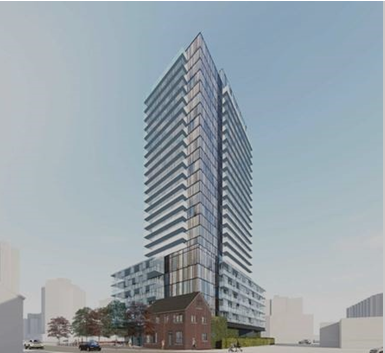 Can the market absorb these two developments that are side by side in the “football”? 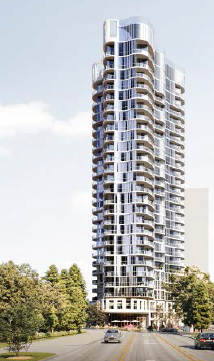
The CORE development for 27 floors, the Old Lakeshore Road (Carriage Gate people) development also looking for 27 floors and their other development on Perl (29 floors), are at the early application stage.
Simple math – 1500 divided by 65 – suggests that it is going to take 23 months to sell those units.
There are other projects that have been put on hold.
Has the development community realized that there are limits on what a community can absorb ?
Maybe the demand isn’t what many have convinced themselves it is.
The Gallery development opposite city appears to have decided to sleep for the next while; construction on the site has come to a halt.

 By Pepper Parr By Pepper Parr
November 25th, 2019
BURLINGTON, ON
The We Love Burlington (WLB) crowd finally got some recognition for the work they did to prevent a change in the status of the municipalities in the Region of Halton.
The provincial government did a Provincial Review and, after a lot of banging away by the municipalities across the province, the top tier governments and citizens groups, the province backed off and said there would not be any changes in the status of the cities.
 Michael Fenn and Robert Seiling were the two members of the Provincial Review panel. Their report was never made public. Many thought the plan was to create a city of Halton with the existing three towns and city becoming almost administrative units.
The city of Burlington didn’t get all that fussed over the issue. Other than the Mayor, little was heard from individual Councillors even though half of their pay cheque comes from the Region.
Blair Smith and Lynn Crosby were the leads on what the Burlington We Loves were doing. They had patterned themselves on the We Love Oakville group and worked closely with them. Burlington and Oakville were not able to raise much in the way of interest in Milton. Halton Hills Mayor Bonnette did take a strong position and worked closely with Mayor Meed Ward at the Regional level.
The Burlington We Love people have sort of morphed themselves into a group that is going to pay a lot more attention to the way Burlington is getting itself to the point where it will have an Official Plan that meets its needs, will get approved by the Region and be something they can defend at LPAT hearings and any other tribunal it finds it has to run up against.
We Love wants to ensure that citizen interests are front and center as the process the city is currently involved in works its way forward.
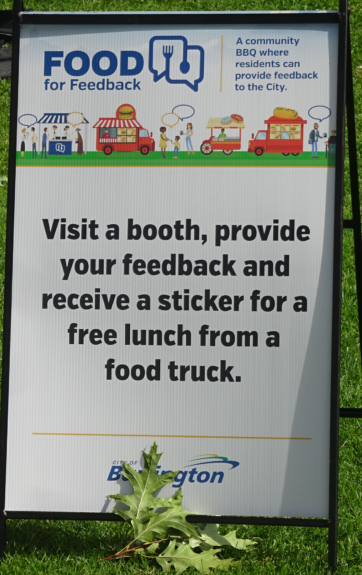 A reported 1000 people took the city up on the offer. At this point there are two “concept” for the downtown core that have come out of the Action Labs, surveys, Food for Feedback plus the Walking Tour. WLB hopes to generate stronger citizen involvement.
 From the left: Blair Smith, Jorge Gomez (Chief of Staff to Mayor Burton), Mayor Burton and Lynn Crosby Back to the event at the Oakville Town Hall. Mayor Rob Burton and several members of Oakville Town Council acknowledged the efforts of the citizen groups that fought against regional amalgamation and the Halton MegaCity. The celebration was primarily focused on WeLoveOakville and the residence associations, Mayor Burton publicly thanked and recognized WeLoveBurlington as well, and presented them with a certificate of appreciation.
For the first time in Oakville history, Keys to the City were presented by the Mayor and the inaugural recipients were the WeLoveOakville committee.
Related news stories:
We love Burlington delegates at Provincial Review
Decision pushed back – again.
Minister decides not to make any changes – report doesn’t get released.

 By Pepper Parr By Pepper Parr
November 22, 2019
BURLINGTON, ON
It was the second public meeting to update people on the 25 year Master Plan that the Royal Botanical Garden is putting in place.
The RBG is a sprawling 2700 acre property that has dozens of nooks and crannies that many, probably most, don’t know anything about.
 Formerly a market garden, Laking Garden is home to RBG’s herbaceous perennial collections. There are of course the obvious Laking, Hendrie, Arboretum and the most recent Rock Garden but did you know about the Rock Chapel? The South Shore Commons?
The RBG has a core group of supporters that are rock hard. They see themselves as stewards there to support management and ensure that no one infringes on the place.
Other than some American Republicans everyone knows we no longer have weather – we have climate change. We are also becoming much more aware of the relationship of the climate we live in and what it does for our overall well-being.
The RBG is an operation with a $50 million budget of which 65% is generated internally.
They are in the process of expanding their revenue options while at the same time taking a look at what in the way of problems is coming their way.
The recent news of the waste water that was allowed to seep into the water is just one example of what RBG has to cope with.
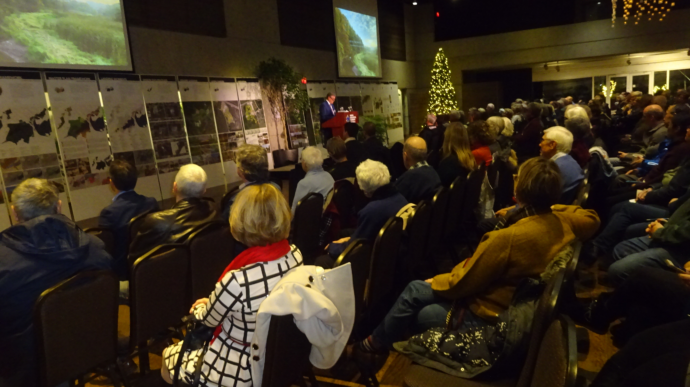 It was a full house of people who see themselves as stewards in place to support management to ensure that no one infringes on the RBG The RBG is part of a bigger picture; it is impacted and impacts the Great Lakes, the Escarpment and local agriculture. Pollution is an ongoing concern and adjacent land users need to have an eye kept on them.
The objective is to ensure that the RBG is ecologically resilient and reflects the changes in the way the public now sees the place.
Drew Wensley, a principal with MT Planners, said they were looking for a way to change the “landing points” for the RBG adding that he didn’t think it appropriate for the entrance to the RBG be a parking lot. He thought the entrance point should be a garden of some sort.
Thought was being given to improving transit to the site and also looking for way to use “green transit” on the site.
All this is a part of the 25 year plan – how does RBG adapt to the public change in attitude towards the changing climate? And how do they continually take the RBG’s environmental pulse?
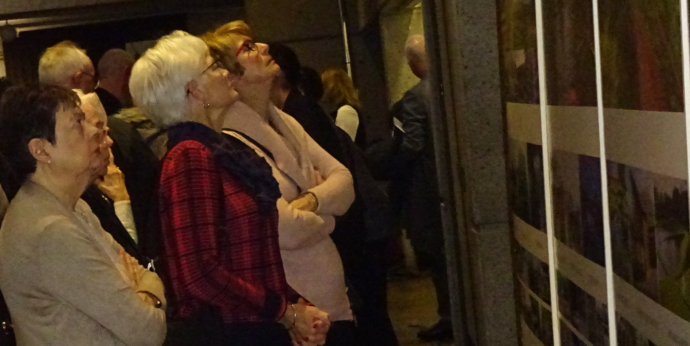 People attending the Master Plan Update meeting had more than fifty poster sized graphics to see in detail the changes that were being thought through. Thursday evening well over 150 people turned out to learn more and get an update on the Master Plan being developed by a team of consultants led by the Primary Consultant, MT Planners. The long-term policy document will identify short-term capital projects to be addressed in the next five years as well as longer-term projects for the next 25 years. The plan is expected to be completed at the end of February 2020 and approved by RBG’s board of directors in mid-March 2020.
Called a “bold initiative” it will be the roadmap for Royal Botanical Gardens to ensure future generations will connect with plant-life in a unique environment, fostering awareness and care for a world that is under increasing ecological threat. RBG aims to instill in everyone they reach, a deeper awareness of themselves, their place on this planet and their role as protectors and stewards of the environment.
“The Master Plan will be the roadmap to achieving RBG’s goals; namely to build the financial strength and independence to serve its future and to enhance infrastructure and amenities for current visitors and for new, more diverse audiences from local, national and international markets.
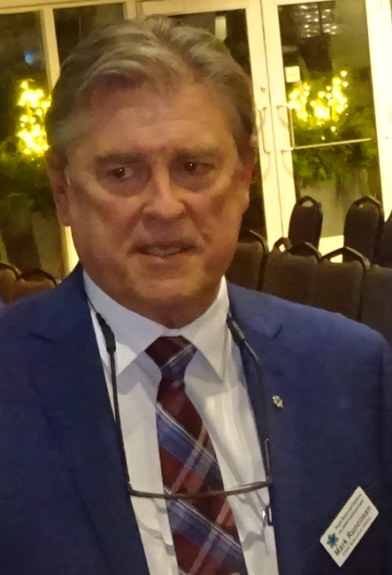 Mark Runciman – the xx of Royal Botanical Gardens; runs a tight ship. “RBG plans to achieve this by creating new revenue streams and leveraging and enhancing its existing land use plan. RBG will explore not only the living framework of the landscape, and its business and market, but the aspirations of RBG’s members and governance body.
“At the heart of this plan is the critical need to nurture and protect ecosystems on a local, national and global scale. While the need to achieve financial sustainability is clear, RBG exists to affect real and positive change in how humanity interacts with our environment and has pledged to take full advantage of our resources, knowledge and reputation to make significant strides in this direction. To bring this Master Plan to fruition, significant fundraising efforts will be required and formalized throughout the planning process.
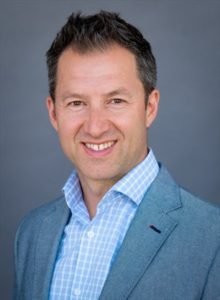 Kelvin Galbraith,Ward 1 Councillor, is the Regional representative on the RBG Board Kelven Gailbraith, who is the Regional representative on the RBG Board noted that: “There was a large crowd at the event last night and many were very excited about the future that this master plan will bring to the RBG.
“Many of the people I spoke with were frequent users of the gardens and use it as an escape from our busy society.”
The Gazette will have an opinion piece in how the meeting went – what worked and what didn’t work.

 By Pepper Parr By Pepper Parr
November 22nd, 2019
BURLINGTON, ON
Well – this comes as no surprise.
People are livid over the changes in the Loose Leaf Pickup Program.
Ward 4 Councillor Shawna Stolte told her fellow councillors she “understands how frustrating this week has been regarding the changing plans and communications around the program.
“Let me start by saying that I was notified on Wednesday, at the same time as the public, that the service was being dramatically reduced.
 This crew will probably not be clearing the leaves from your property. “We have spent the last few days attempting to access additional resources from both the Region as well as outside contractors in order to fulfill the expectations of the community, but unfortunately the vast majority of contractors have already switched their equipment over in accordance with their Snow Removal contracts.
“We have worked diligently to find some resolution with City Staff, but the final decision has concluded that Zone 1, 2 and 3 will only receive one Leaf Pickup this season and Zone 4 Leaf Pickup has been cancelled.
“Once cold weather with freezing temperatures and snow arrives, the sweepers and leaf clearing units cannot operate effectively in below zero temperatures.
“We have also experienced this in the other years where the leaf collection program has been cut very short when winter has come early.
“I fully understand that this decision will frustrate many residents and I assure you, as a resident myself, I share your frustration.
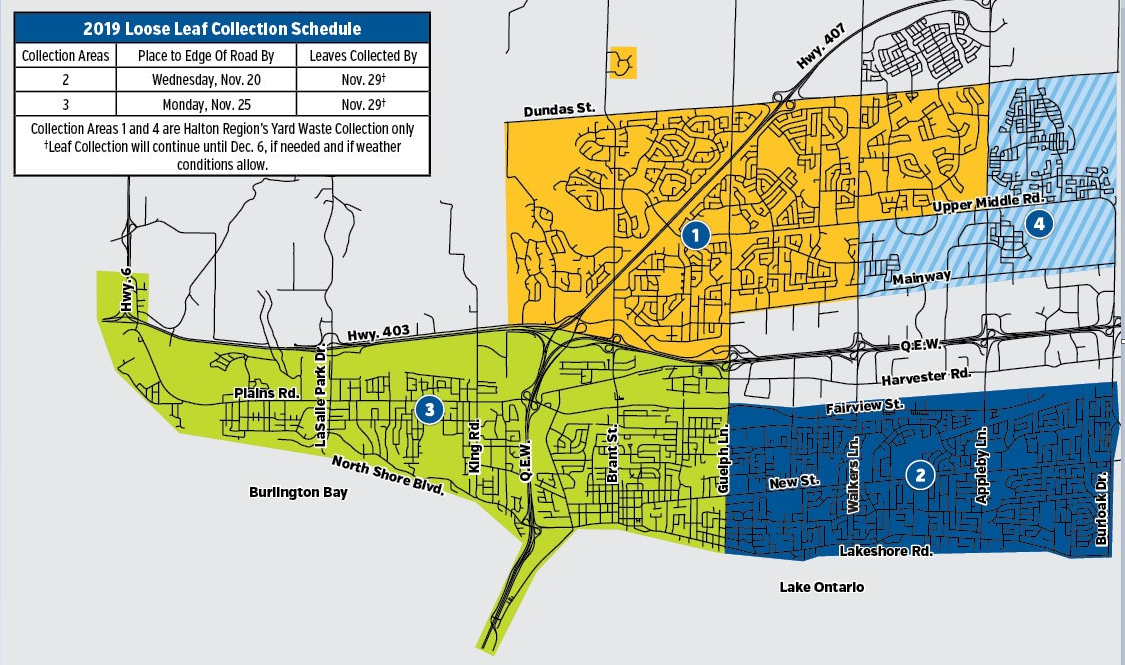 This was the announcement that was put out by the city. Councillor Stolte advises that Zone 1, 2 and 3 will only receive one Leaf Pickup this season and Zone 4 Leaf Pickup has been cancelled. “Senior staff have stated that any decision of this nature is not taken lightly and is carefully considered and balanced against available resources, weather and the priority of winter road and sidewalk clearing.
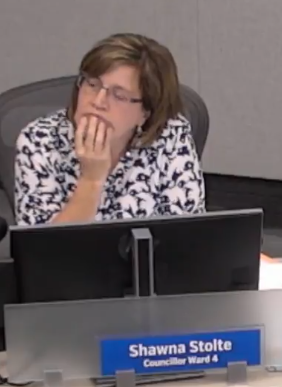 How come Council members were not given a heads up when the leaf collection program was being revised? They might have had some comments – perhaps. No word from the Mayor – not at our level. “Please try to bag or mulch any remaining leaves. The Region has confirmed that they have extended their yard waste collection service until December 20, 2019.
“If you are unable to clear the leaves previously raked to the curb, it would be helpful if all storm sewer grates are cleared to prevent flood risk.
“We are in the midst of an operational review of this program to see how it can be better managed in the future.”
Does that cut it? Will the visceral frustration ease?
This is Burlington.

 By Ray Rivers By Ray Rivers
November 22nd, 2019
BURLINGTON, ON
If you are a political follower like me, you would have been glued to the TV watching the US House of Representatives impeachment hearings for the last two weeks. It is the best entertainment on the tube – better than the latest season of the Crown. And the Democrats have been brilliant, unfolding their story so there can be no doubt about Trump’s guilt in his latest attempt at corruption.
Call it quid pro quo, bribery, international blackmail, breach of trust, abuse of power – take your pick or tick all the boxes. It’s corruption – dishonest or fraudulent conduct by those in power, typically involving bribery. And Trump will almost certainly be impeached by the House of Representatives, though politics being what it is south of the border, he is unlikely to be removed from office.
Corruption seems to be contagious these days. Trump’s closest ally, Israeli PM Netanyahu, has also been indicted for corruption. But at least he didn’t betray his nation’s security as Trump has been doing since his election, given all the irrefutable testimony of the last two weeks.
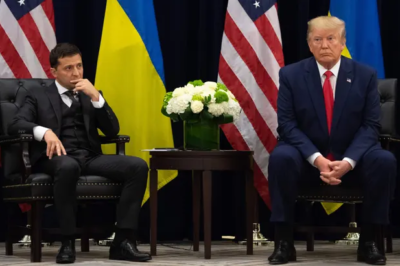 Donald Trump with Ukrainian president Volodymyr Zelenskiy. Trump has been accused of withholding military aide until Zelensky opened an investigation into Joe Biden who wants to run against Trump in the 2020. Few countries can hold a candle to the former Soviet republics when it comes to corruption, and Russia and Ukraine in particular. So Trump figured – what’s a little more corruption – they must be used to it? Or maybe he was just trying to please his master in Moscow.
Canada has had its own share of corruption. Stevie Cameron’s best seller, ‘On the Take’, gives an uncontested accounting of the slime we’d seen over the Mulroney years. And don’t forget the former PM accused of accepting brown paper bags full of cash from that Karl Heinz character. Of course there was the Sponsorship scandal which ultimately kept the Liberals out of power for almost a decade and at one point relegated them to third party status.
Andrew Scheer thought he had hit pay dirt, letting rip accusations of corruption and criminality at Mr. Trudeau over the SNC prosecution. But it turns out there was no smoking gun, just a lot of smoke. Mr. Trudeau had been cited by the Ethics Commissioner a couple of times and he has apologized at least once. But then even mild mannered Stephen Harper ran up a sizeable laundry list of potentially impeachable offences.
 Jason Kenney fired the province’s elections commissioner who was investigating just how Kenny got elected. The latest unwinding of Canadian corruption takes us to Alberta and Jason Kenney. When the province’s elections commissioner investigated some of Kenney’s dirty tricks getting to office, and charged him with over $200,000 in fines, Kenney just borrowed a page from the Donald Trump’s playbook and fired him. And when opposition leader Notley objected, the speaker kicked her out of the legislation and the majority Conservatives just let Kenney off the hook.
Doug Ford had brazenly attacked the Kathleen Wynne government as corrupt. But he must have known that was pure fiction. Indeed the Liberals had an imperfect record during their decade and a half in power, and especially regarding McGuinty’s gas plant mess. But there was no corruption. Even the former premier’s budget numbers were proven to be accurate, at least in light of the auditor general’s observations.
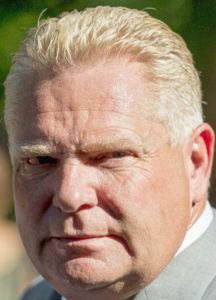 Are the people who voted for Doug Ford experiencing buyers’ remorse? Ford’s popularity has tumbled in Ontario – it’s called buyers’ remorse. Anyone expecting the PC’s to better manage the treasury can’t be happy that the deficit is now climbing to over $2 billion more than it would have under the Liberals this year, despite Ford’s best efforts to slash and burn public services. And that slash and burn will end up in a war in the not too distant future as teachers and other public service employees confront ignorance and a lack of respect from this hostile government.
Ford has been boasting about his other war, the one on the environment. He is proud of how it only cost taxpayers an additional $200 million dollars to cancel and roll back some 800 renewable energy projects. But didn’t Ontario voters support climate action in the last federal election. His actions mean that our growing electricity demand will now have to be supplied with climate damaging natural gas.
And speaking of climate change, tax payers are on the hook for as much as $2 billion dollars a year since Ford cancelled Ontario’s cap and trade carbon pricing system. And we’re also paying for his $30 (plus) million ideological court battle with the feds over the carbon tax – which everyone knows he will lose.
There is no better example of the Ontario government’s abuse of power than forcing every gas station in the province to stick a political message on their pumps. Fortunately the labels seem to want to fall off. Having managed his family’s label making company, one would think that labels would be the one thing Ford could get right.
The Ford government has even messed up the cannabis file having wasted over $40 million dollars this year and failing to get an effective private distribution system in place. The Liberals had planned to use the experienced and profitable LCBO by contrast. Instead something like 80% of the province’s cannabis is still delivered through the blackmarket today.
Given the Ford family’s history around Ontario’s drug culture, one would think that pot would be the other thing he’d be able to manage without screwing up. One can only speculate into whose pockets some of that $40 million went.
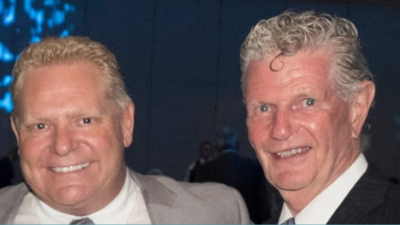 Doug Ford poses for a picture with Ron Taverner, his first nominee for Chief of Ontario Provincial Police. We all live in glass houses when it comes to calling out corruption and it wasn’t long before the cracks started appearing in Ford’s. So far it’s only been a little bit of patronage, nepotism and cronyism. But he has still got two and a half years to go.
Particularly troubling is his government’s intention to muck with judicial appointments. As we’ve learned from the US impeachment hearing, that is perhaps the number one source of Ukraine’s corruption. Can we really trust this government to avoid that pitfall? Can we really trust this government?
Background links:
Israeli Corruption – Mulroney – Harper –
Alberta – Ontario Budget – Ford Cronyism –
Ford Cannabis – Black Market Pot – Politicizing the Judiciary –

|
|


















































































